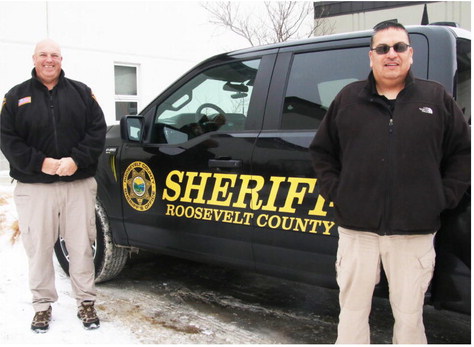FWP Looking To The Future Of State Parks With Revised Fee Schedule, Classification Policy
Even though the summer season at Montana State Parks is over, plans for the management of those parks is really hitting its stride.
It’s been a busy 18 months for Montana Fish, Wildlife and Parks and state parks. Gov. Bullock’s Parks In Focus commission issued its final report in 2018 making several recommendations about funding and management of state parks. A legislative audit was completed with several recommendations for oversight and funding.
“We made a commitment to the public in 2017 that we would put parks on the right path to ensure their management and future,” said FWP director Martha Williams. “We’ve had a lot of help along the way in making these changes and now we’re beginning to see the pieces fall into place.”
Earlier this year, Gov. Bullock signed Senate Bill 24, a bipartisan effort to raise the voluntary light vehicle registration fee from $6 to $9. This optional fee supports not only state parks, but fishing access sites, recreational trails and historic properties in Nevada and Virginia Cities.
This funding was critical for parks management and to make progress toward a backlog of maintenance needs.
This past summer, FWP finalized its revision of the parks classification policy, which will give the department clearer direction on how to manage parks based on the type of experience and level of services provided. The new Classification and Investment Strategy Policy will ideally make it easier for visitors to distinguish between the wide array of options that the park system offers.
“We recognize that visitors want a range of experiences and with this new system of designations, members of the public, current and prospective partners, and other important constituencies will be able to better understand what to expect and how we are managing each site, now and into the future,” said parks division administrator Beth Shumate. “This policy will also help guide our decisions around resource allocation and serve as a framework for better investing in parks across the state.”
FWP regularly reviews fees charged at parks. Approximately 25 percent of the overall state parks operations budget is derived from user fees. Park entrance fees which are paid by non-residents, but waived for residents through their vehicle registration, are an important part of helping state parks keep pace with rising costs of pumping toilets, fuel, utilities and supplies to keep parks running smoothly.
Modest increases for some of those fees are proposed to address rising operations costs and improve visitor experience.
Annually, Montana State Parks sees more than 2.5 million visitors from all over the world. They come to visit developed parks, like Lewis and Clark Caverns State Park, or more remote experiences like Brush Lake State Park in the far northeastern part of the state.
The proposed fee increases will not impact camping fees, but rather are focused in other areas, including non-resident annual passes, RV dump fees, and non-resident daily entrance fees. The proposed increases will bring in about $200,000 for parks operations.
“Our visitors have come to expect a great level of service at Montana State Parks,” Williams said. “Our commitment to them is to continue to provide amazing opportunities outside with exceptional facilities, infrastructure and service.”
